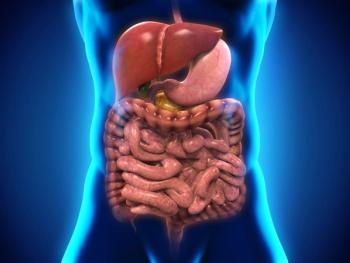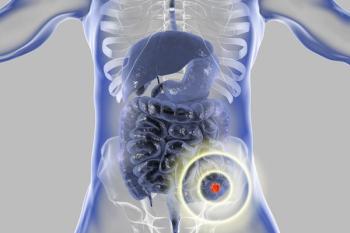
Oncology NEWS International
- Oncology NEWS International Vol 14 No 8
- Volume 14
- Issue 8
Oral XELOX Regimen Comparable to FOX in Advanced Colorectal Ca, Preliminary Data Show
BOLOGNA, ITALY-Preliminaryresults of a small phase II advancedcolorectal cancer trial comparinga protracted fluorouracil
BOLOGNA, ITALY-Preliminaryresults of a small phase II advancedcolorectal cancer trial comparinga protracted fluorouracil(5-FU) infusion plus oxaliplatin(Eloxatin)(FOX) with capecitabine(Xeloda) plus oxaliplatin (XELOX)concluded that the capecitabine combinationhad similar efficacy and tolerability,Andrea Martoni, MD, ofOrsola-Malpighi Hospital in Bologna,Italy reported (abstract 3617).Comparable ActivityThe median time to disease progression(TTP) was 6+ months withFOX vs 8.5+ months with XELOX.Dr. Martoni said that survival data arenot mature, as 56% of patients are stillalive."These results suggest that XELOXhas comparable activity to FOX in firstlinetreatment of advanced colorectalcancer. Toxicity is low and substantiallysimilar in the two arms. Oralcapecitabine combinations could bean acceptable alternative to protracted5-FU infusion regimens," Dr. Martonisaid.Dr. Martoni reported data for 111patients randomized to the two treatmentarms, 101 of whom were evaluablefor response. The median numberof cycles delivered was 6 (1-11) inarm A (FOX) and 6 (1-11) in arm B(XELOX).The objective responses were as follows:Arm A (FOX): complete response(CR) 2%, partial response (PR) 44.1%,stable disease (SD) 24.5%, progressivedisease (PD) 14.3%. Arm B (XELOX):CR 5.8%, PR 34.6%, SD 36.6%, PD17.3%; response rate 44.9% vs 40.3%.The median TTP was 8.5 months withFOX vs 9 months with XELOX.Surgical resection of liver metastasesafter chemotherapy was performedin 4.7% of patients in arm A vs 8.9% ofpatients in arm B. Only two patientsshowed grade 4 toxicity (diarrhea) inarm A (1) and in arm B (1).ToxicityGrade 3 treatment-related toxicitiesin arm A and B were neutropenia(2.4% vs 0), thrombocytopenia (2.4%vs 2.4%), stomatitis (3.8% vs 0), diarrhea(11.8% vs 7.1%), hypertransaminasemia(0 vs 1.8 %), hyperbilirubinemia(1.9% vs 1.8%), andneurotoxicity (15.4% vs 25.5%)."Our preliminary results suggestthat FOX and XELOX, as administeredin this trial, show high activity asfirst-line treatment," Dr. Martoni concluded."Toxicity is low and substantiallysimilar in the two arms," Dr.Martoni said.
Articles in this issue
over 20 years ago
Intermittent Erlotinib With Docetaxel Shows Promise in NSCLCover 20 years ago
Erlotinib Shows Early Activity in Liver Cancerover 20 years ago
Erlotinib Shows Promise as First-Line Therapy, Phase II Data Showover 20 years ago
Bevacizumab/Erlotinib CombinedBoost Responses in Renal Cell CaNewsletter
Stay up to date on recent advances in the multidisciplinary approach to cancer.





















































































